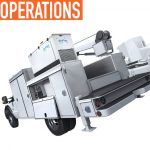Managing a fleet doesn’t necessarily begin and end with the vehicles. It’s important that all the employees and fleet drivers are on the same page. Good communication is a key to success in any endeavor—including this one.
COMMUNICATION IS KEY
In the business world, there’s often the sort of “failure to communicate” referenced in the movie Cool Hand Luke. That failure in the movie resulted in the premature demise of the hero. In real life, when leaders are unclear about their expectations, employees often muddle through blindly, work at cross-purposes, or pursue unintended, unproductive directions. The result is poor organizational performance, if not an early obituary for the leader and his or her vision.
“Ambiguity is pervasive in every organization, but is rarely recognized and poorly remedied, keeping organizations from achieving success,” says customer strategist and executive coach Robin Lawton, author of Mastering Excellence: A Leader’s Guide to Aligning, Strategy, Culture, Customer Experience & Measures of Success.
BE CLEAR
Most business leaders will say their top priorities include service and customer satisfaction, yet seeking improvement in those areas without being clear on what you mean by them “is a fool’s errand,” Lawton says.
To make the journey from ambiguity to clarity, he says, leaders need to:
- Define what “service” means: Ask any 10 employees, representing different levels and functions, for their one-word definition of service. You are likely to find at least eight responses. “If we can’t even agree what service means, how will we achieve excellence?” Lawton asks. He goes on to say “define all work as products” that can be unambiguously characterized, measured, and improved. This focuses on deliverables, not activity.
- Know who the customers are: Ask those same employees who “the customer” is. You will get a similar lack of consensus. Who is to be satisfied? Are all customers equal in priority? How does ambiguity affect the performance of the employee, the department, and the enterprise? Lawton says the solution is to “identify which of three roles a person can play with any product: end-user, broker, or fixer.” Empower and seek to satisfy end-users first.
- Make sure there’s a customer satisfaction policy: If customer satisfaction is a top priority of leadership, is there a customer satisfaction policy? “Sadly, I’ve found in more than 30 years of cultural transformation work that fewer than two percent of organizations can answer yes to this,” Lawton says. “They do have policies on hiring, money management, quality, supplier selection, cost control, and myriad other issues. But, not on customer satisfaction. With no policy on it, how important can satisfaction really be?”
STOP THE CHAOS
Ambiguity can cause chaos, confusion, conflict, and unproductive competition in an organization, Lawton says. Leaders can take a first step to uncovering sources of ambiguity in five minutes, he says, by completing a free self-assessment he offers at www.c3excellence.com/product/c3iq. The insights can be immediately applied.
ABOUT THE AUTHOR
Robin L. Lawton is an author, leadership strategist, executive coach, customer advocate, and motivational speaker. He coined the term “customer-centered culture,” and his “C3” methodology has enabled numerous organizations to achieve rapid and significant growth. His work has been referenced by authors and experts in such areas as business excellence, leadership, customer experience, and innovation. Find out more about Lawton, visit www.c3excellence.com.
_______________________________________________________________________
MODERN WORKTRUCK SOLUTIONS: AUGUST 2017 ISSUE
Did you enjoy this article?
Subscribe to the FREE Digital Edition of Modern WorkTruck Solutions magazine.
![]()




